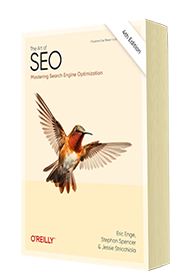Talkback: Don’t hide words from search engines
Contrary to popular belief, there is more to increasing a website’s visibility in search engines than just sprinkling a handful of keywords on it.
The way a site is designed and built has a major impact on whether search engine spiders are even able to access the content.
Don’t assume that every programmer or web designer will know how to build a website that is balanced for the target market – and for the major search engines alike.
Many a website designer and developer are still stuck in the 1990s, using their old-school web design methods because that is what they are familiar with.
Unlike your GP, they do not have to upgrade their skills every year. On the surface, their websites may be glossy and picture perfect. However, under the bonnet it could be a different story.
Creating a good website is about striking a balance between visibility, accessibility, popularity, usability and measurability.
Visibility is about being foundin search-engine results and also on sites such as nzherald.co.nz.
There are three ways of being found:
- Naturally and for free in search engine results.
- People naturally linking to your site (perhaps by word of mouth or email).
- Paid online advertising, including pay-per-click ads, banner ads, text link advertising and sponsorship deals.
When I started in internet marketing in 1995 I was promised I would know where every dollar was spent and where every dollar was generated online.
The internet is highly accountable and indeed this is very true — if you make use of the ability.
Measurability is key to understanding how each of your online channels is performing; that is what profitable retailers do. Marketers need to measure the number of times messages are seen, number of clicks and return on investment. A common misconception is that keeping on-brand is only about the look and feel of the site. Many websites of this type force all text into images, thus preventing search engines from accessing the words. Don’t get me wrong, I love animated sites, but creating a whole site that way is not doing the client any favours. It’s all mouth and no trousers.
Websites that do not take usability into account, saying to purchase tickets from this site you may need to install the Macromedia Flash Player, do not deserve to be in business. Marketers need to remember that offline marketing activity influences what people search for online.
If a company spends millions of dollars on television, print, radio and outdoor advertising but forgets to technically optimise its website and make branded and related non-branded words available to search engines, then it is opening itself up to competitors taking advantage of the marketplace generated online by their own advertising investment.
Website technologies have their place and, when used correctly, can help visitors and search engines alike. I don’t want to sound like Chicken Little and declare the sky is falling should you not create a well-balanced site, but you are missing out on the chance to maximise your online brand exposure if practical e-marketing is ignored.
Jacqui Jones is a search and online marketing consultant at Netconcepts, an online marketing specialist, focusing on web design, website optimisation, email marketing and e-commerce consultancy.
Comments

Chapter 6:
Keyword Research
From the fundamentals of link building to the nuances of natural linking patterns, virality, and authority.
Related Posts

Thursday Three: Embrace Journaling, Tackle Tardiness, and Explore Our Energetic Echo
Here’s what I found inspirational, challenging, or just downright hilarious this week. What caught your eye? And, remember to check out this week’s great podcast episodes: Scaling a SaaS Company with Jason Morehouse “A crucial factor to business success is to find and take the personal path that works best for you.” — Jason Morehouse […]
Read More
Thursday Three: Harrison’s harmony, conquering a blank canvas, & gut health hacks
Here’s what I found inspirational, challenging, or just downright hilarious this week. What caught your eye? And, remember to check out this week’s great podcast episodes: Be a Sales Game Changer with Fred Diamond “True elite sales professionals develop a dedicated mindset, proactive client interaction, and continuous self-preparation. They understand their client’s needs and enable […]
Read More
Thursday Three: Rebirth of sleeper trains, 4,000 weeks is a long/short time, and golden age for medicine
Here’s what I found inspirational, challenging, or just downright hilarious this week. What caught your eye? And, remember to check out this week’s great podcast episodes: A Story Worth Retelling with Luke Storey “Aligned values are the cornerstone of successful partnerships, whether in business or life, as they shape our moral code, define our priorities, […]
Read More